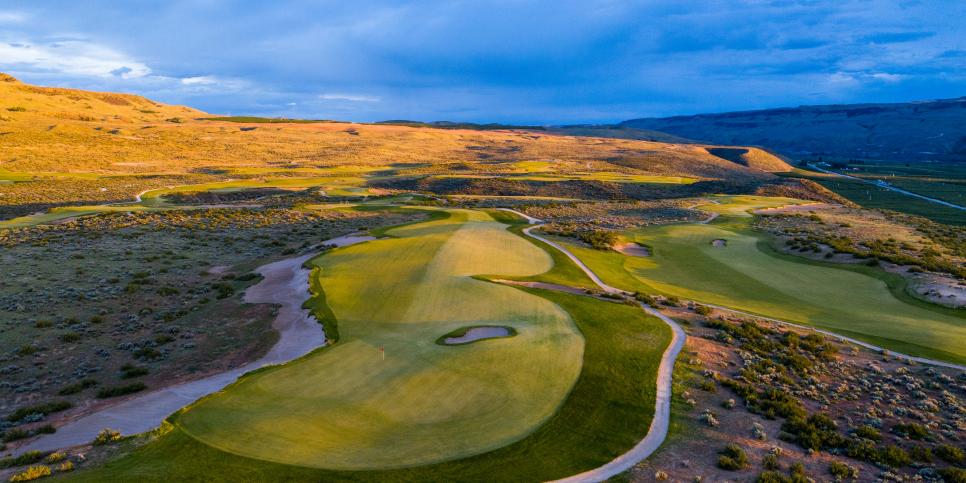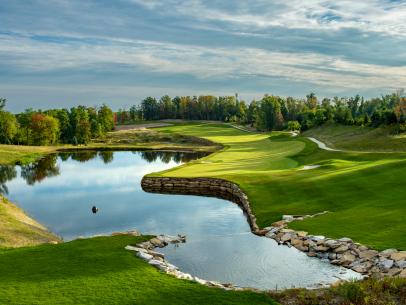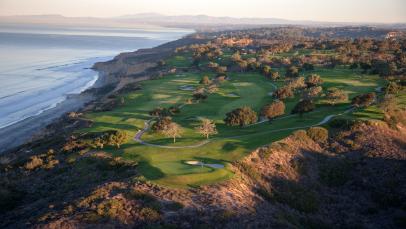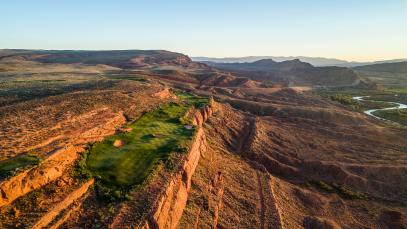It’s easy to get too far in the weeds on some architectural concepts, but risk/reward holes are rather simple. They present golfers choices and ask them to make decisions about how to play the hole based on a calculation of what tactic might give them the most realistic chance of making a low score. That choice is to risk hitting a shot over or around a hazard—usually a bunker, water feature or some other form of penalty area—to gain an advantage on the next shot—usually a shorter or more open approach to a green, a better lie or a better view.
Pull it off and you have your reward. Fail, and it’s time to pay the piper. Good scoring on courses with high risk/reward thresholds requires clear thinking, courageous choices and solid execution.
Challenge and strategic decision-making are the soul of the game. The best risk/reward holes stimulate the mind and quicken the pulse. More importantly, they keep golfers coming back for another crack.
Here are 15 of the best public risk/reward holes you can play. Scroll on to read more about each course and click around to read reviews from our course-ranking panelists. We hope you enjoy our searchable course database, Places to Play, our new hub for course reviews, experts’ opinions and star ratings.
BAY HILL CLUB & LODGE, Orlando, par-5 sixth hole, 589 yards

Bryson DeChambeau nearly ruined the integrity of this par 5 by driving across the middle of the lake and hitting flip wedges into the green during the 2021 Arnold Palmer Invitational. For those of us who don’t carry our drives 340 yards, this continually curving hole requires taking on the water on both the tee shot and second shots if the shortest possible third shot into the green is desired. Playing safely away from the lake, meanwhile, requires the golfer to cover more ground. Though the details of the sixth have changed numerous times through the years, the original strategic concept laid out by Dick Wilson in 1961 hasn’t.
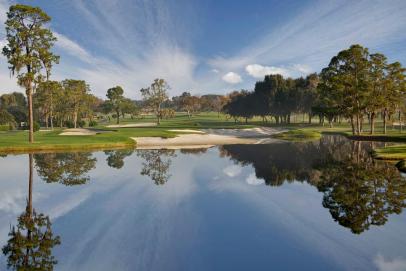
From Golf Digest Architecture Editor emeritus Ron Whitten:
I've always been fascinated by the design of Bay Hill, Arnold Palmer's home course for over 45 years (although Tiger Woods owns it, competitively-speaking, as he's won there eight times.) For one thing, it's rather hilly, a rarity in Florida (although not in the Orlando market) and dotted with sinkhole ponds incorporated in the design in dramatic ways.
I always thought the wrap-around-a-lake par-5 sixth was Dick Wilson's version of Robert Trent Jones's decade-older 13th at The Dunes Club at Myrtle Beach. Each of the two rivals had claimed the other was always stealing his ideas. But the hole I like best at Bay Hill is the par-4 eighth, a lovely dogleg-right with a diagonal green perched above a small circular pond. Okay, I admit that it reminds me of the sixth at Hazeltine National, another Trent Jones product, but I don't think Wilson picked Trent's pocket on this one, as both courses were built about the same time, in the early 1960s.
For our complete review, visit Bay Hill's Places to Play page here.
PACIFIC DUNES, Bandon, Ore., par-4 fourth hole, 463 yards
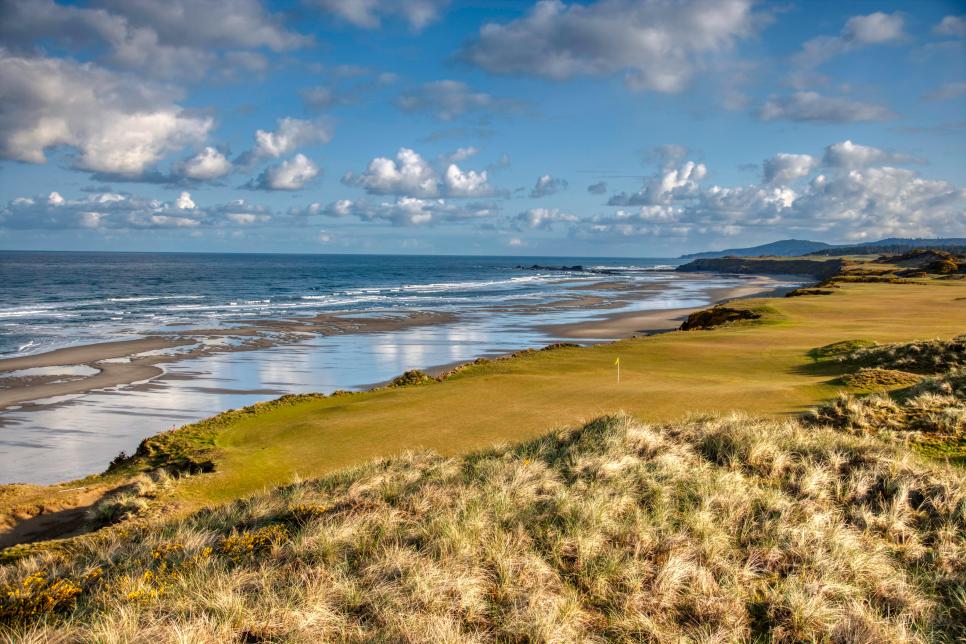
Stephen Szurlej
There’s nothing subtle about Pacific Dunes’ fourth hole, though the strategy isn’t obvious at first. Tom Doak utilized two hazards here. The first, the cliff running the length of the hole that rises 40 feet over the Pacific Ocean beach below, is unmistakable. The urge is to hit drives to the prodigious fairway out to the left. That side, while protected by a large bunker, seems relatively safe, but it amplifies the second hazard, the dune connected to the left edge of the putting surface that kicks approach shots played over its corner toward the ocean. The only way to get a direct, clean line into the green is to hit a drive that bravely hugs the cliff-line.
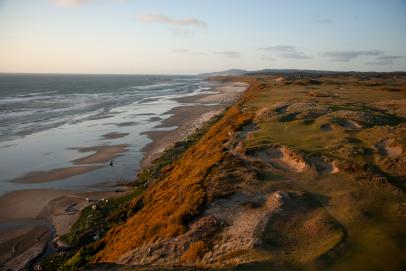
SHEEP RANCH, Bandon, Ore., par-4 sixth hole, 460 yards
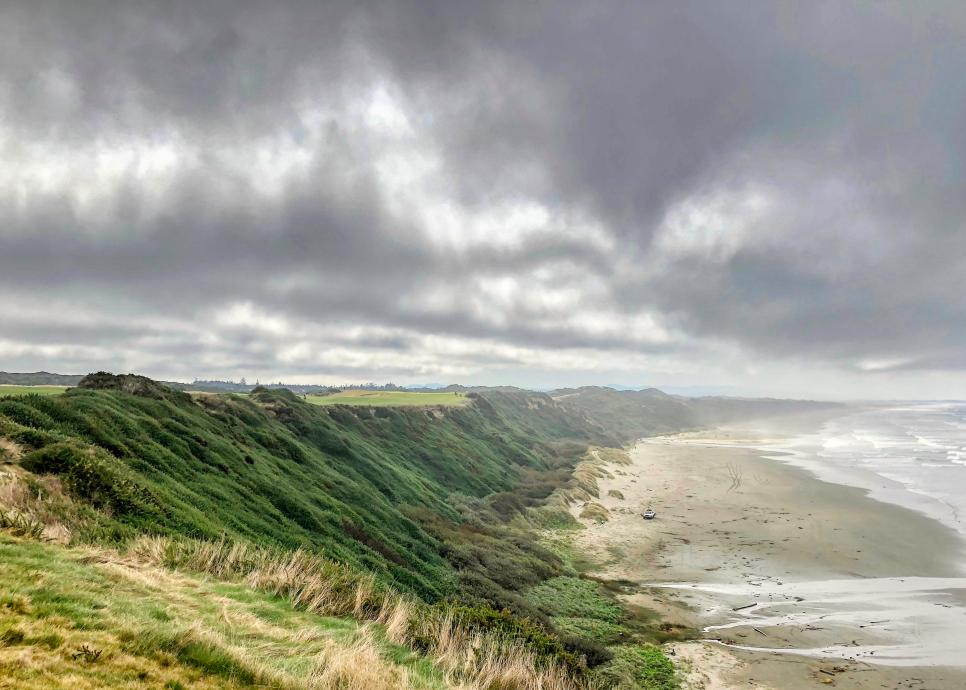
Derek Duncan
For all the sensational clifftop holes at Bandon Dunes, only one plays across the ocean frontage. The tee shot at Sheep Ranch’s sixth, designed by Bill Coore and Ben Crenshaw, shoots diagonally over the beach toward a blind fairway. Drives can be timid or aggressive, but the less distance they cut off the longer the second shot will be, and likely from an angle that must come over a bunker blocking the green’s front left (there’s no sand in the bunkers here, but that doesn’t guarantee a clean lie). Heroic tee shots farther down the bluff that land safely get a shorter approach and an open look coming into the green from the right.
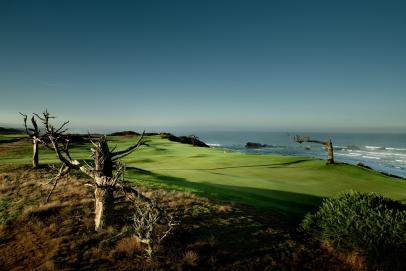
BUFFALO RIDGE at BIG CEDAR LODGE, Hollister, Mo., par-5 18th hole, 575 yards

Derek Duncan
The 18th at this scenic Tom Fazio design in south Missouri is a “bite off as much as you dare” hole. Two large bunkers embedded into the edge of a ravine must be challenged with the tee shot, the second one with a 290-yard carry from the back tees. If successful, the green is potentially reachable if the approach avoids flanking greenside bunkers and doesn’t hook into the ravine. Drives played too conservatively court a different kind of risk: flying through the angled fairway and ricocheting off the bordering rock embankments that give Buffalo Springs Ridge its distinctiveness.
GAMBLE SANDS, Brewster, Wash., par-4 17th hole, 428 yards
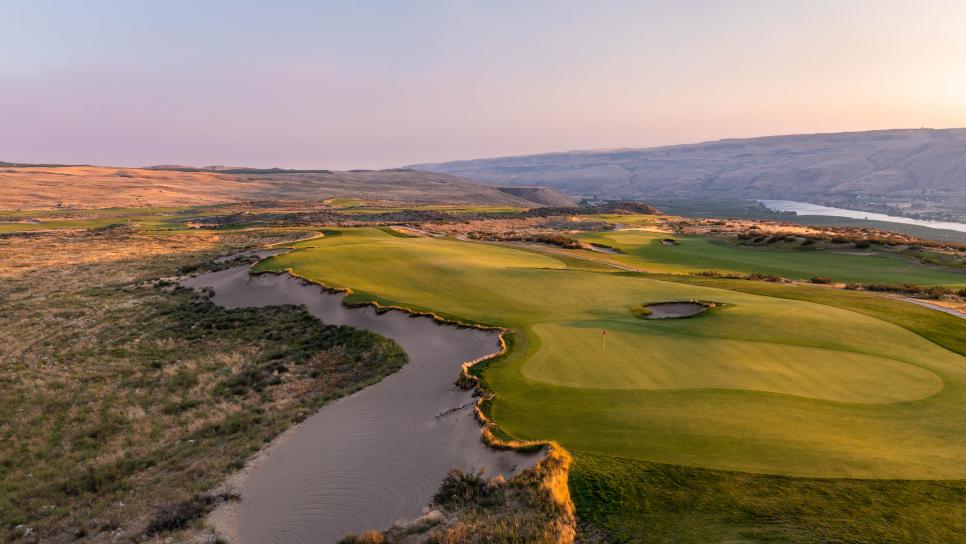
Brian Oar
Gamble Sands, designed by David McLay Kidd in 2015, might be one of the most entertaining courses in America to drive the ball. Nearly every hole is a risk/reward fiesta. The instinct on the 17th hole, angled diagonally over a sunken arroyo, is to play to the fat part of the fairway. From there balls race into the light rough and leave a blind, awkward approach that must carry a greenside bunker to a putting surface that tilts toward a deep trench of sand beyond. Only tee shots that gamble with the edge of the depression on the right buy an accessible look at the green. It's textbook strategy in an enthralling high-country setting overlooking the Columbia River valley.
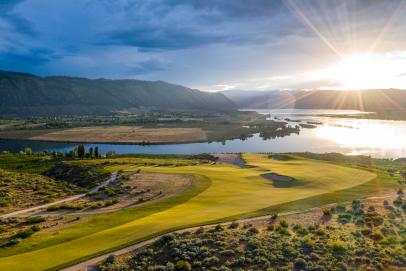
MARQUETTE (Mich.) GOLF CLUB—GREYWALLS, par-4 ninth hole, 389 yards

Courtesy of the club
Golf holes don’t need elaborate hazard arrangements to be strategically complex. Sometimes a single bunker in the correct location can cause consternation, as is the case with the bunker occupying the left half of the fairway at Greywall’s ninth, the wild Upper Peninsula design by Mike DeVries ranked 67th on Golf Digest America’s 100 Greatest Public Courses. The play is to cover it with a 260-yard carry off the tee or thread a drive through a narrow passage on the right leaving a wedge approach. If you don’t like either of those high-risk options, take your medicine and lay back to the generous landing area and accept a more fraught 150-yard shot up to a narrow green benched into a side slope that falls off steeply on the left.
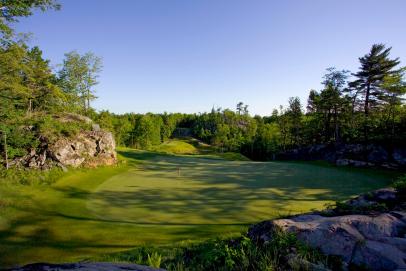
MAY RIVER GOLF CLUB AT PALMETTO BLUFF, Bluffton, S.C., par-4 seventh hole, 336 yards
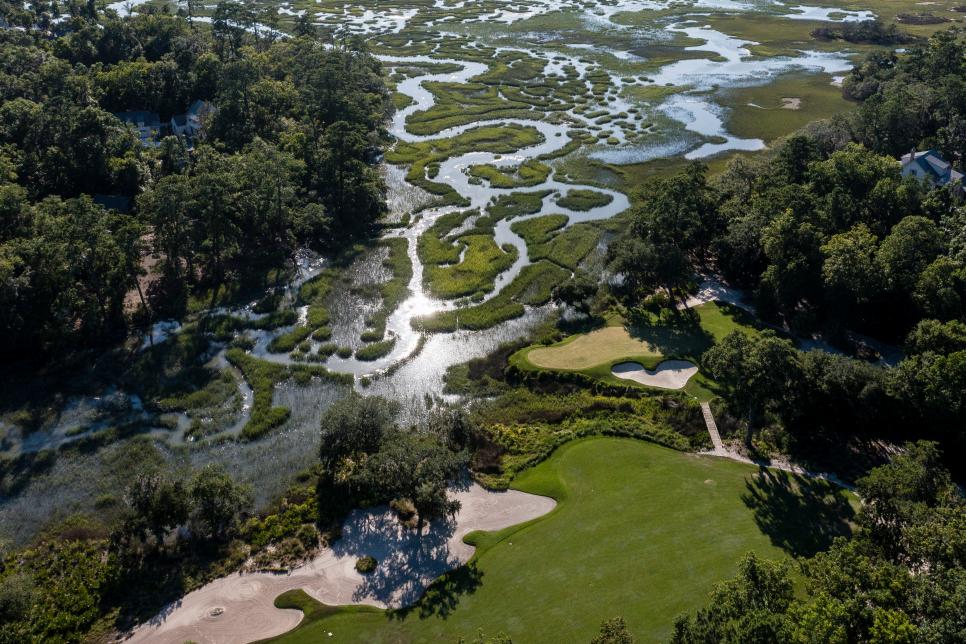
Palmetto Bluff
Short par 4s don’t work if they can’t entice you to try to drive, or get near, the green. They also don’t work well if there’s no threat of disaster if the attempt fails: The prospect of carding a 2 or 3 must be at least one degree stronger than laying back to a safe spot in the fairway. The seventh at this lovely lowcountry Jack Nicklaus design outside of Hilton Head possesses near equal measures hope and horror. The small green placed on the far side of a wetland is surrounded by a swamp of lost strokes and must be accessed through the air (don’t try this from the back tees), but hitting an iron or hybrid to the island fairway and pitching across from a shallow angle is so unsatisfying it makes having a go seem rational.
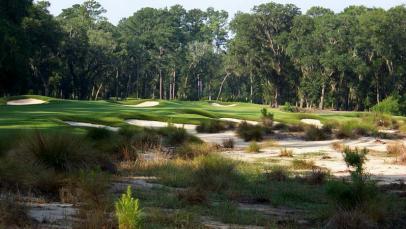
May River Golf Club At Palmetto Bluff
Bluffton, SC
NEMACOLIN—SHEPHERD’S ROCK, Farmington, Pa., par-5 fourth hole, 619 yards
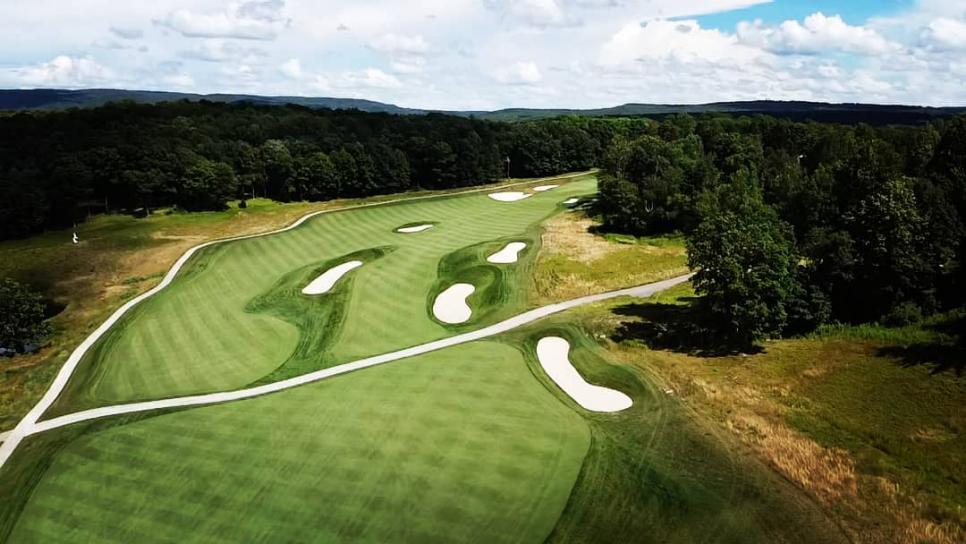
Christopher Anderson
This massive par 5 is a classic “pick your path” hole with two routes to the hole. Tim Liddy and Pete Dye co-designed the course in 2017, and they make you declare your intention immediately with a 40-yard strip bunker that cleanly separates the high right route from the lower left line of play. Those who can hit it far enough to take the high route shorten the hole greatly and can potentially get near the green in two strokes, but that upper fairway is less than 25 yards wide and bracketed by three high-faced bunkers from which long escapes are not possible. The low side of the hole is circuitous but much less defended, and going that way includes a blind approach into a narrow green vaulted above a pair of deep bunkers.
REDLANDS MESA GOLF CLUB, Grand Junction, Colo., par-4 14th hole, 370 yards
Whether you love or hate this Jim Engh-designed hole depends on your sense of humor and your sense of fairness—the most slippery of golf concepts. This short par 4 doglegs 90 degrees right toward a green nestled in a bowl of rock outcroppings. The simple play is to hit something past the aperture, then pitch in sideways for the second shot. But from the elevated tees, at almost a mile above sea level and playing from the correct markers, the temptation to go for the green directly by carrying the drive over the rocks might be too tempting to pass up. The risk, of course, is that anything that comes up short might deflect in any direction into the desert.

RUSTIC CANYON GOLF COURSE, Moorpark, Calif., par-5 13th hole, 582 yards
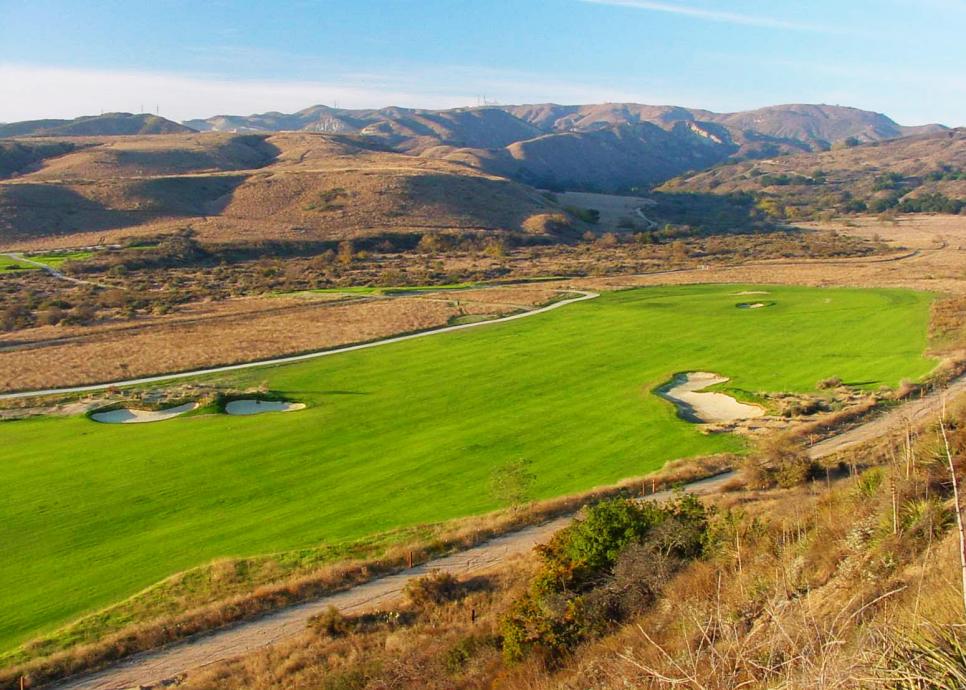
Tom Noccarato
Great par 5s make players grind not just on their tee shots but on their second shots as well. At Rustic Canyon, a Gil Hanse-Jim Wagner-Geoff Shackelford design in Southern California, a pot bunker in the center of the fairway 275 yards from the rear tee takes care of the first part of the equation making players decide to drive left, right, short or over it, with out of bounds stretching down the right. From there the puzzle continues for those trying to get home in two as another pot bunker protects the center of the boomerang green. Layups need to be just as calculated depending on where the hole is cut because the best angles are from either the extreme left or extreme right side of the second landing zone.
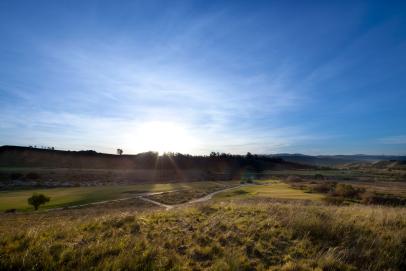
SENTRYWORLD, Stevens Point, Wis., par-5 ninth hole, 474 yards
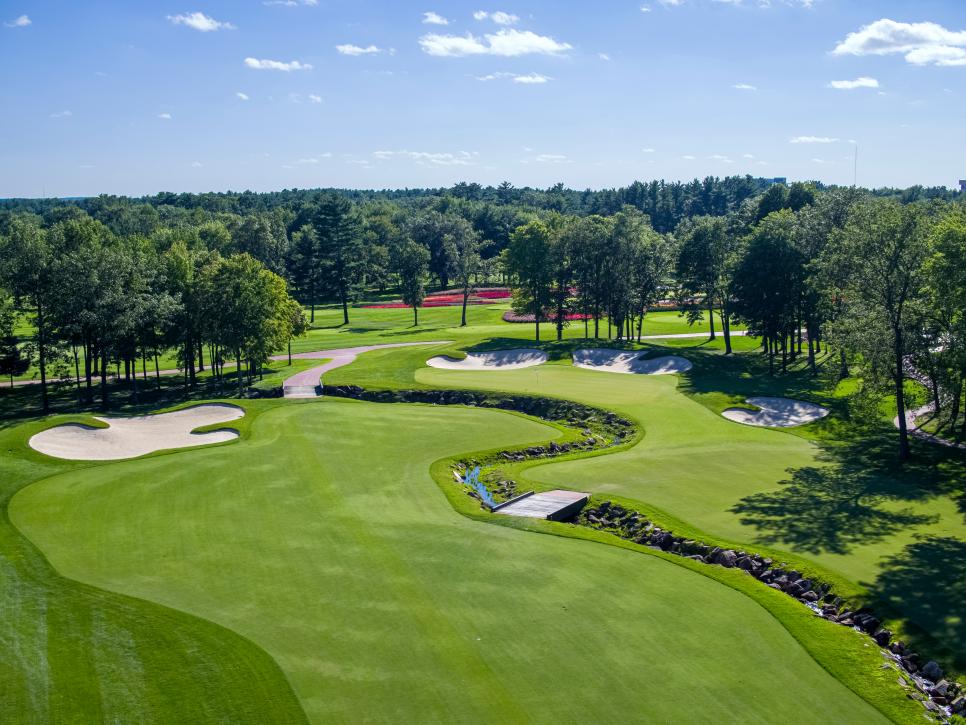
Evan Schiller
This short par 5 forces players to carry out risk/reward assessments on both the drive and the second shot. A stream weaves through the fairway between 205 and 255 yards off the championship tee, and golfers must decide whether—and what portion of it—to carry with their drives. It then meanders back through the second landing area before cutting hard in front of the green, necessitating another analysis of courage. There’s a bailout fairway to the right, but after risking the creek with the drive, why would anyone lay up on their second shot? SentryWorld recently updated its original 1982 Robert Trent Jones II design when the architect returned to prep the course for the 2023 U.S. Senior Open.

STREAMSONG (Fla.)—BLACK, par-5 fourth hole, 601 yards
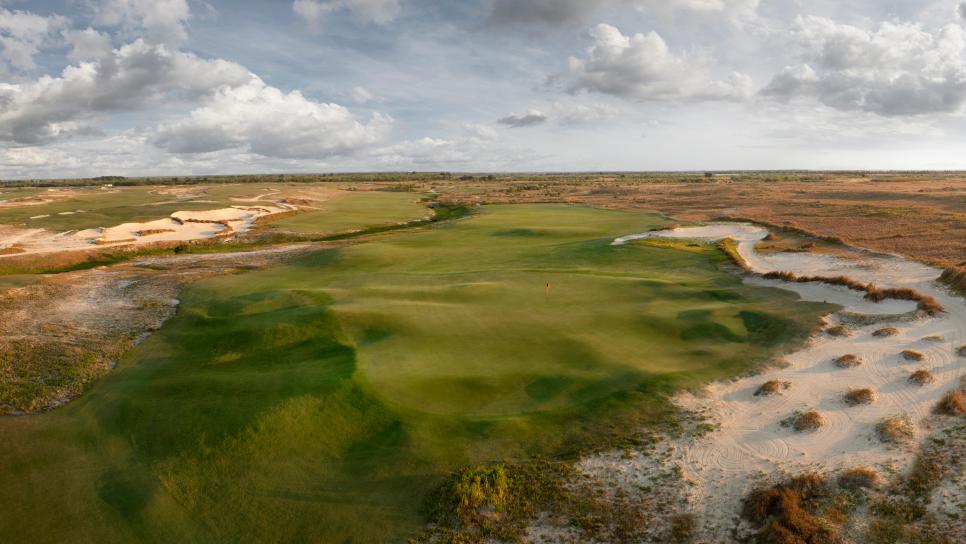
Bill Hornstein
The Black’s fourth hole, designed by Gil Hanse and Jim Wagner, is a take on Pete Dye’s 11th hole at TPC Sawgrass, one of the Stadium course’s most strategic and original holes. The drive plays downhill at an angle over a dry ravine and players can bite off as much as they dare. From there the risk-taking continues with the choice of playing back over the gully to an upper fairway that’s blind from below, leaving a straight-in third shot over bubbling terrain, laying up farther down the primary fairway, or taking a giant go-for-broke second shot that must cover the wash and a ridge of exposed sand. (Bombers can play it a third way by taking the ultimate risk and aiming for the upper fairway off the tee, an all-carry drive of between 265 and 325 yards.) Unlike Sawgrass where misses around the green leave dicey up-and-downs from sand, pot bunkers and grassy mounds, the Black’s gargantuan green is surrounded by nearly an acre of short grass.
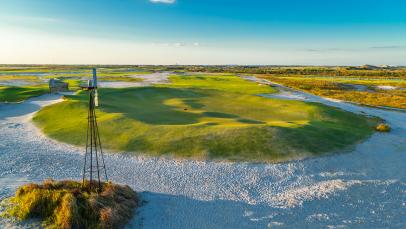
THE PRAIRIE CLUB—DUNES COURSE, Valentine, Neb., par-4 13th hole, 429 yards
Tom Lehman and Chris Bounds took full advantage of all the space they had in the sand hills when designing this big, matrix-like par 4. Golfers need to take measure before they tee it up because hole location on this wide, right-to-left oriented green dictates the strategy from the beginning. The 125-yard-wide fairway is divided in half by a pair of bunkers, and two more bunkers on the left and right await drives hit too aggressively. An onerous pot bunker front-center of the green complicates matters, so if the hole is cut on the forward half an approach from the right of the centerline bunkers offers the best access. When the hole is on the back lefthand portion of the green, the play is down the left where shots can be bounced onto the putting surface left of the greenside bunker.
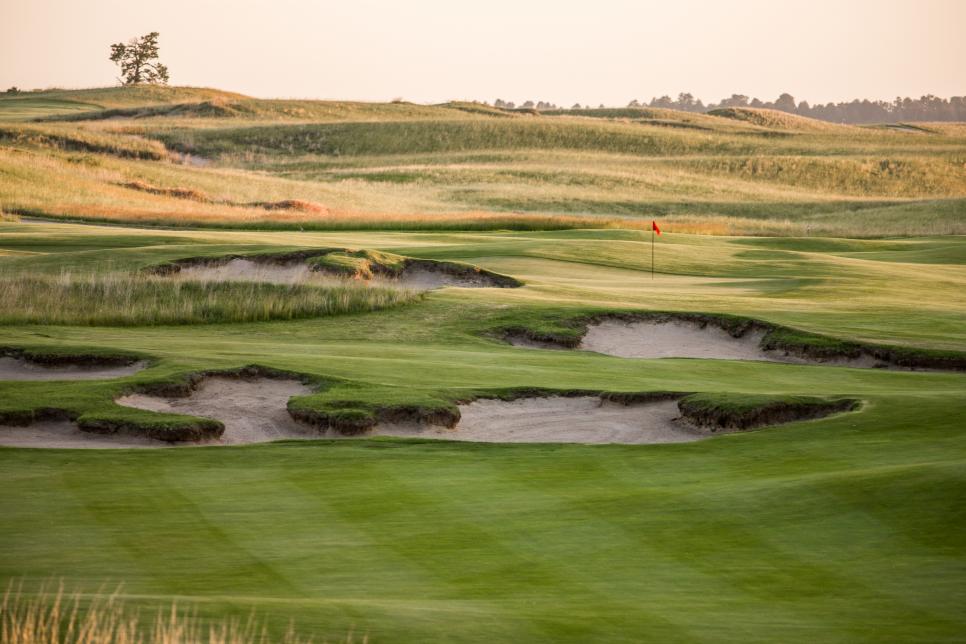
Dave Eggen
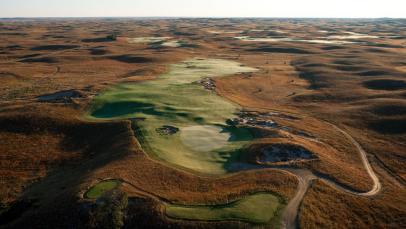
TOBACCO ROAD, Sanford, N.C., par-5 11th hole, 531 yards
Like everything at this Mike Strantz-designed course near Pinehurst, Tobacco Road’s fishhook 11th hole is unconventional. A cavernous waste area defines the right side of the hole and stretches all the way to beneath the green where it’s about two stories deep, and the left side consists of 80 yards of fairway. There’s no reason to play anywhere near the sand barren unless you want to get close to the green in two shots. It’s a simple three-shot hole playing around the hazard, but strong drives that flirt with the edge will leave just 175 yards to the green, uphill and all-carry on the tiger line. The payoff for a risky drive here isn’t a better angle into the green—in fact it’s a worse angle due to the wide shallow putting surface—but rather a drastically shorter second shot.
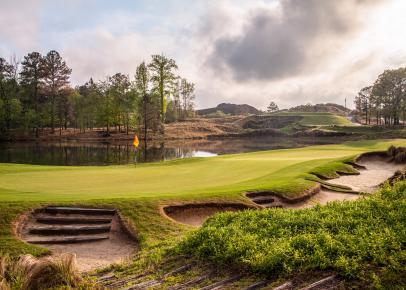
WE-KO-PA—SAGUARO COURSE, Fort McDowell, Ariz., par-5 14th hole, 538 yards
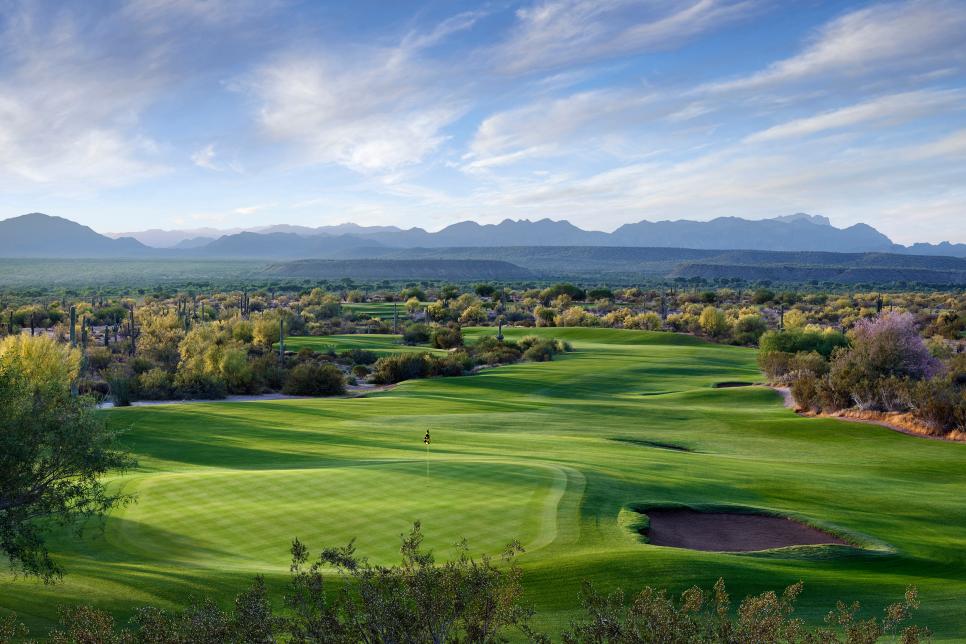
Lonna Tucker/Courtesy of We-Ko-Pa
The 14th at the Saguaro Course, designed by Bill Coore and Ben Crenshaw in the desert north of Scottsdale, is a version of the Channel hole first created by C.B. Macdonald at the original Lido course on Long Island. Channel holes represent one of golf’s purest forms of risk/reward architecture: One fairway curls in an unbroken line around a penal hazard—often a lake but in this case a heavily vegetated dry barranca—and allows players free access to the green without having to cross a hazard. The other option is a second fairway in the form of a small island that resides within the hazard. Those who choose the lower percentage drive to the island fairway are rewarded with a shorter, unguarded second shot to the green and a chance for birdie.

